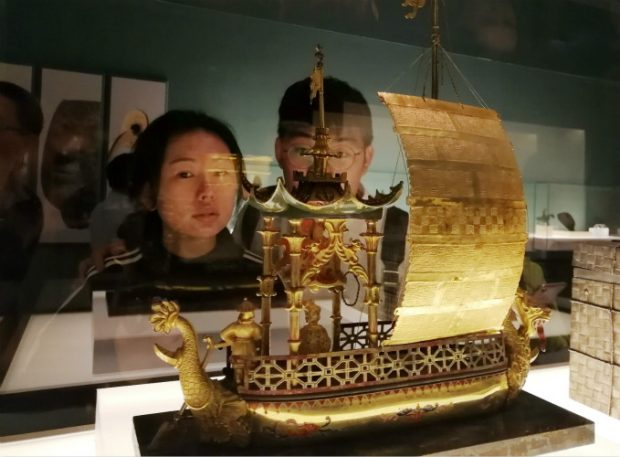Beijing exhibition explores the ancient Silk Road
The National Museum of China, in conjunction with national museums in 12 other countries, showcases the rich and diverse cultural exchanges between the countries in an exhibition of 234 cultural relics along the Silk Road from different periods and categories nowadays. With the theme “Sharing a Common Future”, this exhibition runs until July 14, 2019. The ancient Silk Road stretched for tens of thousands of kilometers and lasted for thousands of years. This exhibition brings together 234 cultural relics from 13 countries along the Belt and Road including China, Cambodia and Russia, to show exactly how the Silk Road affected early globalization.
In his introduction, Wang Chunfa, director of the National Museum of China, said that the exhibition will present and display the theme through two sections, the Land Silk Road, and the Maritime Silk Road, and reflect on the ways of cultural exchanges among countries along the Silk Road according to the geographical location. The connection between China and western Eurasia has existed since prehistoric times. Wheat, cattle, sheep and bronze casting – the most important domesticated species and handicraft technique during prehistoric times and the Bronze age, were introduced from West Asia and the Persian Plateau via the Silk Road. Bronze was first used to form tools and weapons. Once in China, it was used to make everything from pots to money.
This Roman glass dates back from the 1st century A.D and is usually housed in the National Museum of Slovenia. Roman glass found its way along the length of the ancient Silk Road, after the technique of glass blowing was first created and then put into mass production towards the end of the first century AD. Later, in the 16th Century, the Maritime Silk road became a vital link in the early era of globalization. Porcelains, silks and other goods were shipped from China, through Africa, to Europe, and European silver continuously flowed into China.
The exhibition shows treasures that left China hundreds of years ago, only to find their way back for this very exhibition. For example, various Qing Dynasty enamel and porcelain are on display from the Polish National Museum collection, as well as Southern Song Dynasty pieces from the Oman National Museum. Of course, it wasn’t only weaponry or fancy items that found their way along the Silk Road, but also spirituality. Take, for example, the “Joy Diamond” painted with gold bronze, from the National Museum of Cambodia. Mahayana Buddhist Tantra spread in Cambodia from the 10th to 11th centuries AD, after being spread along the Silk Road in other forms from India to China and then through South East Asia.
By He Zhuoyan & Morag Hobbs
(People’s Daily Online)

























































